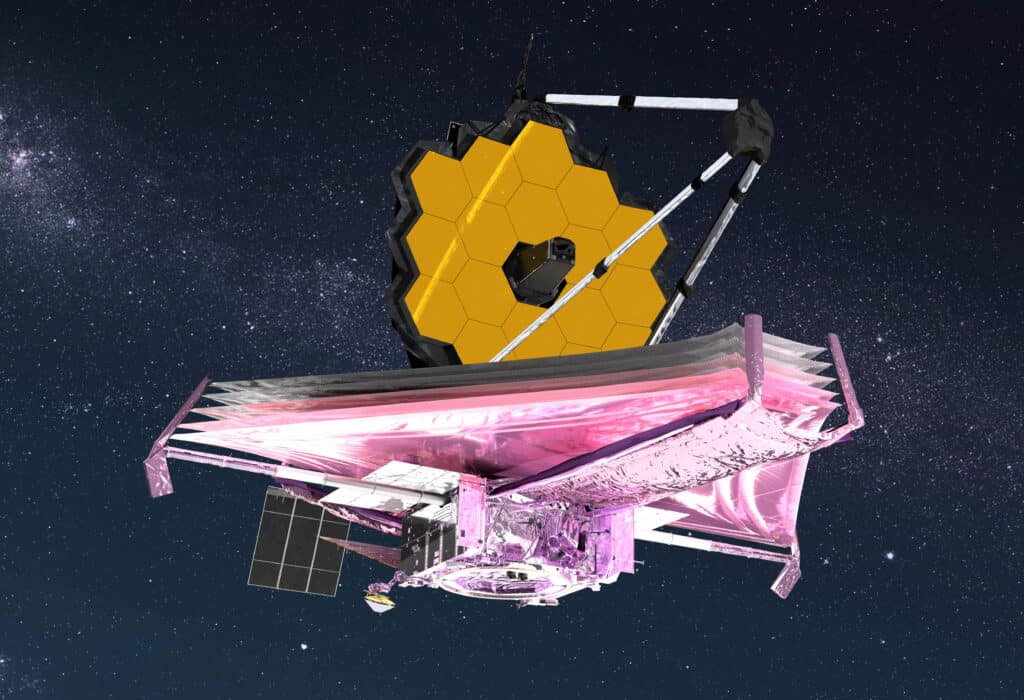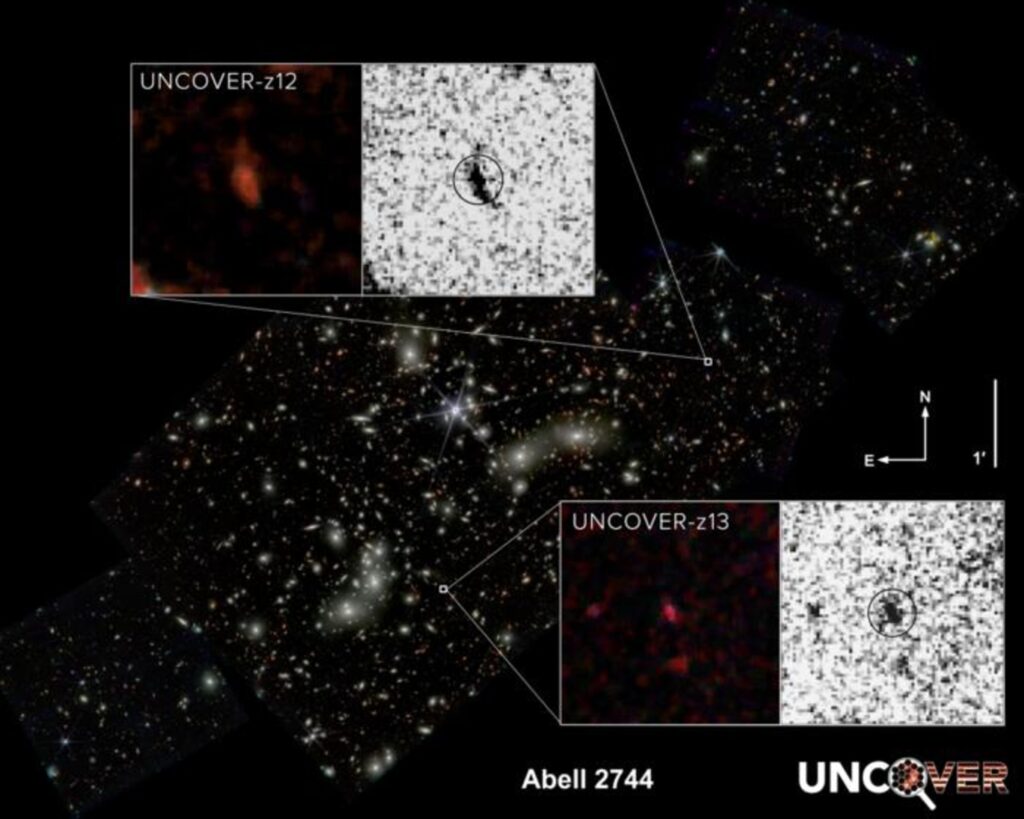NASA’s James Webb Space Telescope (JWST) continues to make — and find — history. In its latest remarkable cosmic discovery, JWST has identified the second- and fourth-most distant galaxies ever observed, shedding new light on the universe’s earliest days. These astonishing findings were made within a region known as Pandora’s Cluster, or Abell 2744, and have the potential to reshape our understanding of how galaxies formed in the early universe.
A team of international researchers, led by scientists from Penn State University, harnessed the power of the JWST to confirm the distances of these ancient galaxies and infer their properties using spectroscopic data. Spectroscopy provides information about light emitted across the electromagnetic spectrum and is a crucial tool for astronomers in understanding celestial objects.
“Very little is known about the early universe, and the only way to learn about that time and to test our theories of early galaxy formation and growth is with these very distant galaxies,” says study first-author Bingjie Wang, postdoctoral scholar in the Penn State Eberly College of Science and a member of the JWST UNCOVER (Ultradeep NIRSpec and NIRCam ObserVations before the Epoch of Reionization) team that conducted the research, in a media release. “Prior to our analysis, we knew of only three galaxies confirmed at around this extreme distance. Studying these new galaxies and their properties has revealed the diversity of galaxies in the early universe and how much there is to be learned from them.”
One extraordinary aspect of these newfound galaxies is their appearance. Unlike previously confirmed galaxies at similar distances, which often appear as mere red dots in images, these two galaxies present distinct shapes. One resembles a peanut, while the other looks like a fluffy ball. These peculiar features have piqued the curiosity of scientists.

The vast distance of these galaxies is another astounding aspect. The light detected by JWST from these galaxies commenced its journey when the universe was approximately 330 million years old. That light traveled for a staggering 13.4 billion light years before reaching the telescope. However, due to the universe’s expansion during this time, the galaxies are currently estimated to be around 33 billion light years away from Earth.
“The light from these galaxies is ancient, about three times older than the Earth,” notes Joel Leja, assistant professor of astronomy and astrophysics at Penn State and a member of UNCOVER. “These early galaxies are like beacons, with light bursting through the very thin hydrogen gas that made up the early universe. It is only by their light that we can begin to understand the exotic physics that governed the galaxy near the cosmic dawn.”
What sets these two galaxies apart from their predecessors at similar distances is their size. One of them measures at least 2,000 light years across, making it considerably larger than the three previously discovered galaxies. This surprising size difference raises questions about the processes governing galaxy formation and evolution in the early universe.
The discovery of these galaxies occurred during JWST’s first deep field images captured in 2022. These images were taken behind galaxy clusters, leveraging gravitational lensing — a natural magnification effect caused by the gravitational pull of the clusters. This magnifying effect provided astronomers with an amplified view of the region behind the clusters.
Researchers meticulously analyzed the data, narrowing down 60,000 light sources to 700 candidates for further investigation. Among these candidates, eight were considered potential ancient galaxies. JWST was then pointed again at Pandora’s Cluster to obtain the spectra of these candidates, revealing the two distant galaxies.
These galaxies, in their youth, possessed few metals in their composition and were actively forming stars at a rapid pace.

“The first elements were forged in the cores of early stars through the process of fusion,” explains Leja. “It makes sense that these early galaxies don’t have heavy elements like metals because they were some of the first factories to build those heavy elements. And, of course, they would have to be young and star-forming to be the first galaxies, but confirming these properties is an important basic test of our models and helps confirm the whole paradigm of the Big Bang theory.”
While this discovery opens a small window into the early universe, researchers believe that JWST’s powerful instruments could potentially detect galaxies even further away, if they exist. This endeavor, though, presents challenges due to the limited observational window.
“We had a very tiny window into this region, and we didn’t observe anything beyond these two galaxies, even though JWST has the capability,” says Leja. “That could mean that galaxies just didn’t form before that time and that we’re not going to find anything further away. Or it could mean we didn’t get lucky enough with our small window.”
The study is published in The Astrophysical Journal Letters.











